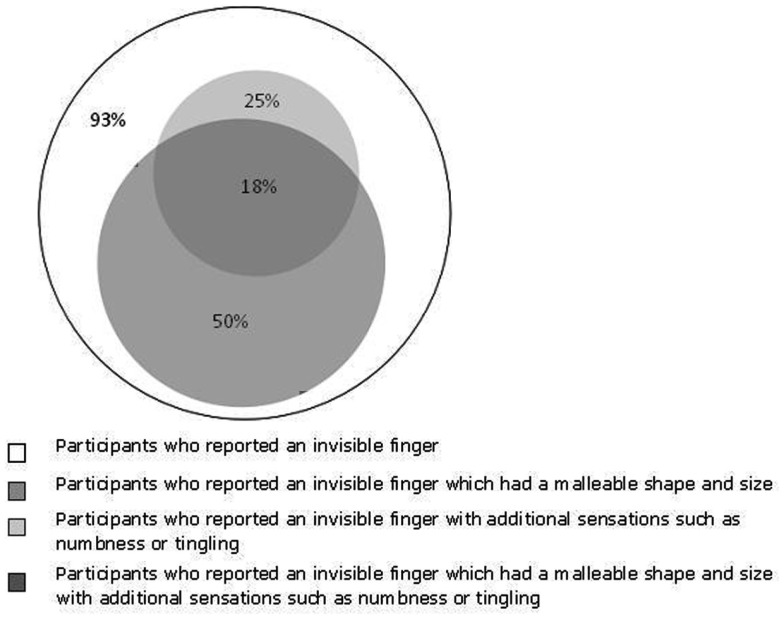Figure 4.
A Venn illustrating the proportion of participants who described their feeling of the missing finger in various ways. A definition of each characteristic emerged from the qualitative analysis and was subsequently used to quantify the proportion of participants who reported each characteristic. The number of participants who reported each adjective is presented below in brackets. The white circle represents the 28 participants who described their ring finger as invisible (20), or used another metaphor to describe something with a physical presence without a visual image, e.g., a camouflaged finger (8). The dark gray circle represents the 14 participants who reported an invisible finger which had a malleable shape and size. These participants reported the following adjectives when comparing their invisible finger percept to normal embodiment or their experience during the RHI: longer (7), extending (2), stretching (2), flatter (2), bumpier (1), squashier (1), swollen (1), clenched fingers (1). The light gray circle represents the seven participants who reported additional sensations in their invisible finger. These participants reported the following adjectives when comparing their invisible finger percept to normal embodiment or their experience during the RHI: tingly (2), more intense (4), numb (3), tense (2), aching (1), cold (1), heavy (1). The region of gray overlap represents the five participants who reported an invisible finger which was both malleable in form and had additional sensations.

